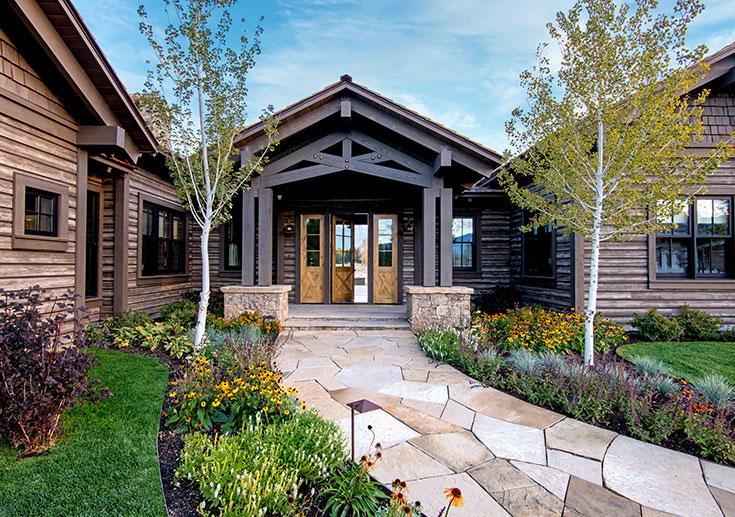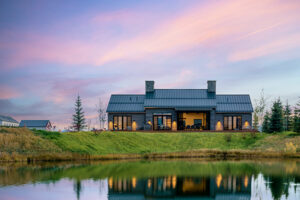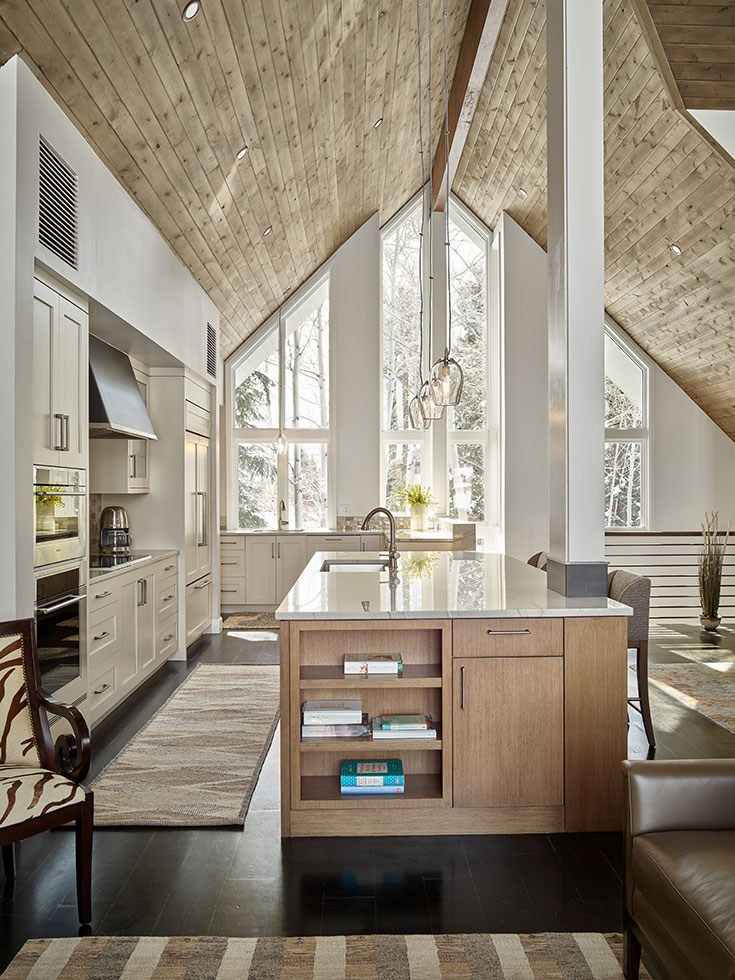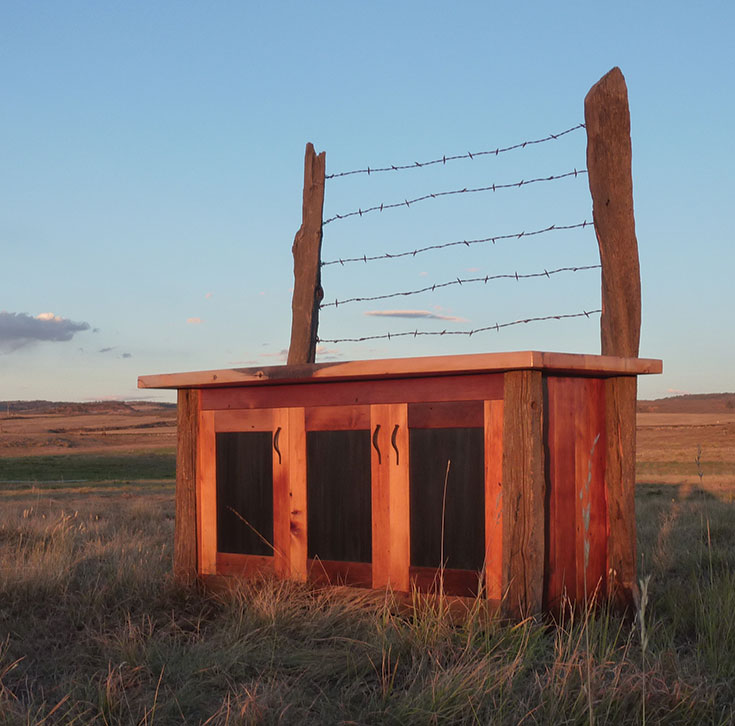
Kirsten Rue
Photos By
Centennial Woods
Meg Thompson
On a long drive from, say, Jackson Hole to Cheyenne, one might be tempted to label the vast prairie streaming past the car windows as an “empty” landscape. This, artist and furniture artisan Meg Thompson would suggest, is an oversimplification.
“If you get up close and personal in almost any landscape in the West, you will find evidence of humans—from 50 years ago to thousands of years ago,” Thompson says. “We have a long, interconnected relationship with this desert called the American West.”
It is a relationship Thompson honors as a native daughter of Wyoming and, most importantly, as a craftsman. She grew up on a small ranch south of Laramie and “as a kid out on the prairie, the landscape was an animate being and constant companion that informed my world in a way people could not.” As she combed the surrounding short- grass prairie, Thompson’s finds multiplied from rusty cavalry tin cans to sunbaked leather holsters and arrowheads.
In her own environment, Thompson locates a lingering human trace that is anything but bereft.
She channels this soul of the prairie into each of her meticulously handcrafted custom furniture pieces, and into the visual art installations she frequently creates to enliven the prairie itself. Although her route back to the Wyoming plains included a detour in Brooklyn, New York, where she studied cabinetmaking, Thompson now focuses on bespoke materials reclaimed from promising old woodpiles or homesteads just one hinge slip from collapse. Word has gotten out: Frequently, ranchers contact her directly or she returns home to a pile of lumber neatly stacked on her front stoop.
Thompson also works directly with clients to transform sentimental scraps of wood—a family barn perhaps—into pieces such as a dining table, thus creating a tangible heirloom of the building’s past.
The “imperfections” inherent in old wood are, in Thompson’s view, the very scars that imbue each piece with the physical and energetic soul of its provenance. She works actively not to camouflage or buff these imperfections away, but rather to accentuate them in the finished work of art.
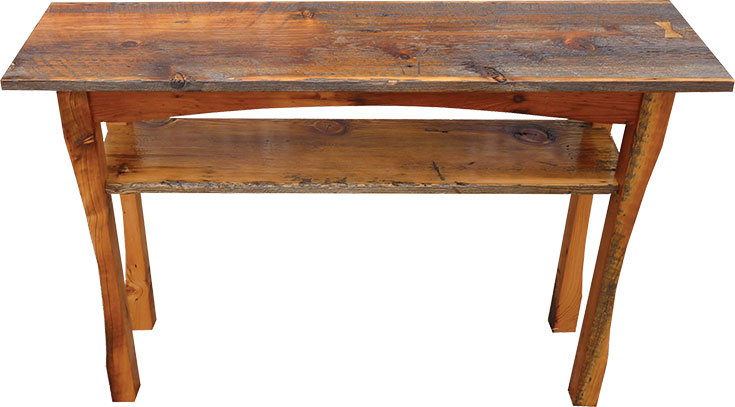
I have found old bullet slugs in barn siding before, and I will work to highlight that detail by using it as a drawer front.”
– Furniture artisan Meg Thompson
“For example,” Thompson explains, “I have found old bullet slugs in barn siding before, and I will work to highlight that detail by using it as a drawer front. Or I will leave an indented, round area on the front edge of a shelf where a horse has nibbled away at the wood.” In 2012, her entry received the Exhibitors’ Choice award at the Western Design Conference.
Thompson isn’t the only artisan finding value in Wyoming-weathered wood. Suzanna Hamilton, founder of the Western Craft Association and an authority on Western antiques and crafts, notes, “We have a great romance going on with reclaimed wood right now. People respond to the character, patina, and softness that it has.”
Reclaimed hardwood has become nearly ubiquitous in western residential and commercial projects as a result. Homegrown Wyoming company Centennial Woods, however, markets reclaimed wood that is organic to the life cycle—and weather cycle—of the state itself.
Ed Spal, CEO of the Laramie-based company, explains that Centennial Woods operates in some ways as two companies. Sixteen years ago, the founders of the business took a look at the snow fences that lattice the Wyoming prairie, especially along the lonelier stretches of the interstate, and saw an opportunity.
What did they discover? Snow fence represents a green solution to two needs: maintaining Wyoming’s roads during oftentimes harsh winters, and inventing a more sustainable end destination for wood that is strong, nontoxic, and weathered to the perfect patina.
A snow fence, erected to prevent snow from blowing on the road, saves the state in snowplowing costs. In turn, Centennial Woods’ team of 34 employees saves the Wyoming Department of Transportation the expense of replacing and disposing of each fence by milling the used wood—which stays up 10 to 15 years— for a variety of construction needs all over the world. Spal estimates that, since 1999, the work of Centennial Woods has saved WYDOT (and, by extension, Wyoming taxpayers) approximately $18 million.
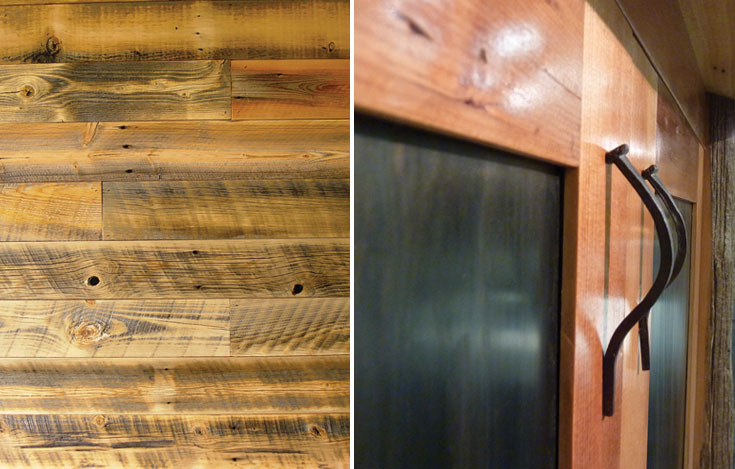
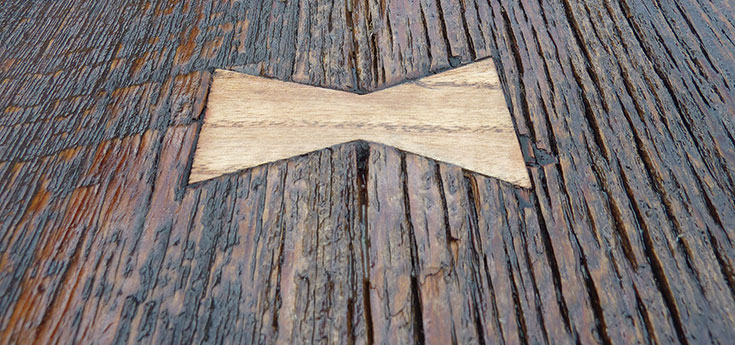
After Centennial Woods’ craftsmen remove the aged snow-fence wood, they sort through it intending to salvage as much as possible. From exterior siding to interior paneling and fascia, snow fence suits many building purposes. “Each order is custom,” Spal explains. “We’re focused on solution selling—what works for the consumer or contractor.” Technicians can also apply specially formulated water sealant or safe, nontoxic dyes by request.
All finishing work is sensitive to the unique character of the wood—a texture achieved over a decade of scouring snows. Says Spal, “Wood in a home is like chocolate for the body. It’s a comfort feeling type of thing that you derive from having this aesthetically rustic look from natural, real wood in your home.”
Homeowners who choose reclaimed wood— whether for an accent wall or a handmade credenza—also participate in an economy with a decidedly green tint. The Forest Stewardship Council audits Centennial Woods annually and has granted it a 100-percent green rating.
The original snow-fence timber is sustainably harvested within the region from ponderosa pine, lodgepole pine, and Douglas fir forests. Centennial Woods has reclaimed a whopping 12 million feet of snow-fence wood and circumvented more than 13,000 tons of carbon dioxide emissions since its inception.
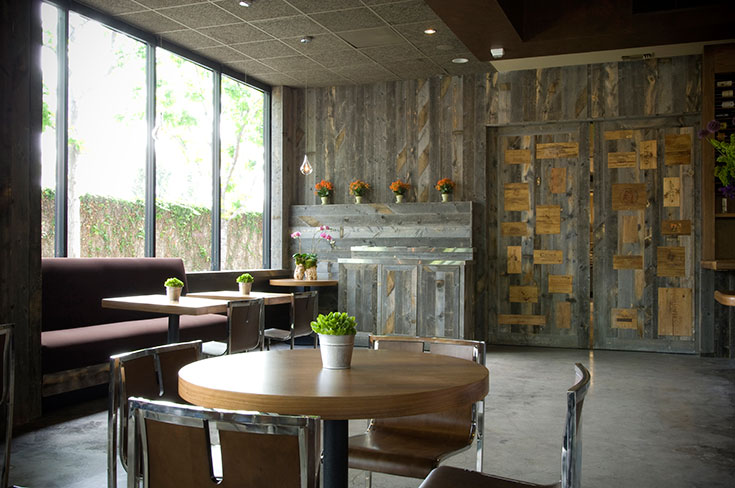
The practice of repurposing wood from the prairies is not far removed from those of original U.S. homesteaders, Hamilton points out. “This hearkens back to how this country was really founded,” she says, referring especially to the time period between the mid-19th and mid-20th centuries.
“Found, repurposed, recycled—it’s not a different process. It’s just a 21st-century interpretation of that practice.”
Waste not, want not. It’s a credo that works in Wyoming.
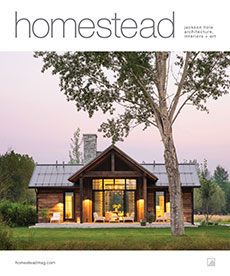

 Personal Style
Personal Style